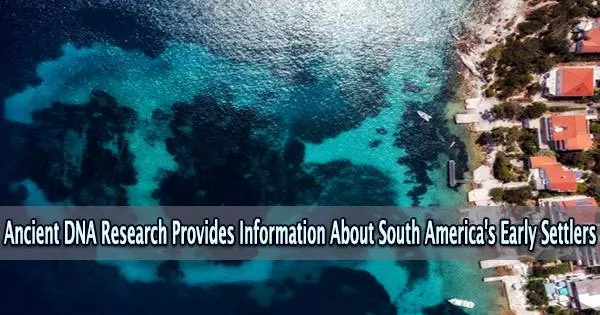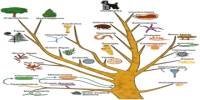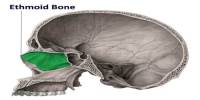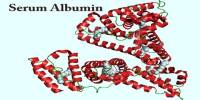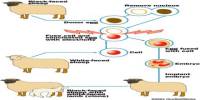The Americas were the final continent to see human habitation. An expanding corpus of archaeological and genetic data suggests a complicated process of colonisation. This is particularly true for South America, where unforeseen ancestral signals have sparked puzzling hypotheses about the first migrations into various parts of the continent.
There are still many outstanding questions, such as whether or not the early humans moved south down the Pacific coast. While there is archeological proof of a north-to-south migration by ancient Indigenous peoples during the original settlement of the Americas, it is still unclear where these ancient humans went once they arrived.
Using DNA from two ancient human individuals unearthed in two different archaeological sites in northeast Brazil Pedra do Tubarão and Alcobaça and powerful algorithms and genomic analyses, Florida Atlantic University researchers in collaboration with Emory University have unraveled the deep demographic history of South America at the regional level with some unexpected and surprising results.
Researchers have identified migrations in the opposite way along the Atlantic coast for the first time, in addition to providing new genetic evidence to support the already-existing archaeological data of the north-to-south movement toward South America. The study offers the most thorough genetic support there has been for intricate prehistoric migration routes through Central and South America.
The significant findings include the identification of Neanderthal ancestry in the DNA of prehistoric people from South America. An extinct group of primitive humans known as the Neanderthals lived throughout Eurasia throughout the Lower and Middle Paleolithic.
Results of the study, published in the journal Proceedings of the Royal Society B : Biological Sciences, suggest that human movements closer to the Atlantic coast eventually linked ancient Uruguay and Panama in a south-to-north migration route 5,277 kilometers (3,270 miles) apart. Based on the ages of the ancient people, it is estimated that this unusual migration trend started about 1,000 years ago.
There is an entire Pacific Ocean between Australasia and the Americas, and we still don’t know how these ancestral genomic signals appeared in Central and South America without leaving traces in North America.
Andre Luiz Campelo dos Santos
Findings show a distinct relationship among ancient genomes from northeast Brazil, Lagoa Santa (southeast Brazil), Uruguay and Panama. According to this new concept, the majority of the Pacific coast and the Andes were mostly populated before the Atlantic coast was settled.
“Our study provides key genomic evidence for ancient migration events at the regional scale along South America’s Atlantic coast,” said Michael DeGiorgio, Ph.D., co-corresponding author who specializes in human, evolutionary, and computational genomics and is an associate professor in the Department of Electrical Engineering and Computer Science within FAU’s College of Engineering and Computer Science.
“These regional events likely derived from migratory waves involving the initial Indigenous peoples of South America near the Pacific coast.”
Researchers also found strong Australasian (Australia and Papua New Guinea) genetic signals in an ancient genome from Panama.
“There is an entire Pacific Ocean between Australasia and the Americas, and we still don’t know how these ancestral genomic signals appeared in Central and South America without leaving traces in North America,” said Andre Luiz Campelo dos Santos, Ph.D., first author, an archaeologist and a postdoctoral fellow in FAU’s Department of Electrical Engineering and Computer Science.
Researchers found that ancient people from Uruguay and Panama had more Denisovan heritage than Neanderthal ancestry, which further complicated the situation. A group of extinct humans known as denisovans was originally discovered in 2008 using DNA sequences from the tip of a finger bone.
“It’s phenomenal that Denisovan ancestry made it all the way to South America,” says John Lindo, Ph.D., a co-corresponding author of the article who specializes in ancient DNA analysis and is an assistant professor in the Department of Anthropology at Emory University.
“The admixture must have occurred a long time before, perhaps 40,000 years ago. The fact that the Denisovan lineage persisted and its genetic signal made it into an ancient individual from Uruguay that is only 1,500 years old suggests that it was a large admixture event between a population of humans and Denisovans.”
Previously at the Federal University of Pernambuco in Recife, Brazil, dos Santos and colleagues uncovered the remains of the two ancient humans from northeast Brazil, which date back to at least 1,000 years before present, and sent them to Lindo for DNA extraction and subsequent genomic sequencing and analyses. Raw data were then sent to FAU for computational analysis of the whole genome sequences from northeast Brazil.
The two recently sequenced ancient whole genomes from northeast Brazil were compared to other ancient whole genomes from the Americas as well as the current global genome.
According to Lindo, only a handful of ancient entire genomes from South America have been sequenced and published as of the article’s publishing date, compared to hundreds from Europe.
Apart from the occurrence of mass burials in the sites that yielded the samples from northeast Brazil, Uruguay, southeast Brazil and Panama, there is no other evidence in the archaeological record that indicate shared cultural features among them.
The investigated prehistoric people from southeast Brazil are also around 9,000 years older than those from northeast Brazil, Uruguay, and Panama, which provides ample time for expected and obvious cultural diversity. Even though they are closer in age, northeast Brazil, Uruguay, and Panama are thousands of kilometers distant from one another.
“This groundbreaking research involved many different fields from archaeology to biological sciences to genomics and data science,” said Stella Batalama, Ph.D., dean, FAU College of Engineering and Computer Science.
“Our scientists at Florida Atlantic University in collaboration with Emory University have helped to shed light on an important piece of the Americas puzzle, which could not have been solved without powerful genomic and computational tools and analysis.”
Study co-authors are Amanda Owings, Ph.D., Emory University; Henry Socrates Lavalle Sullasi, Ph.D., Federal University of Pernambuco, Brazil; and Omer Gokcumen, Ph.D., State University New York at Buffalo.
